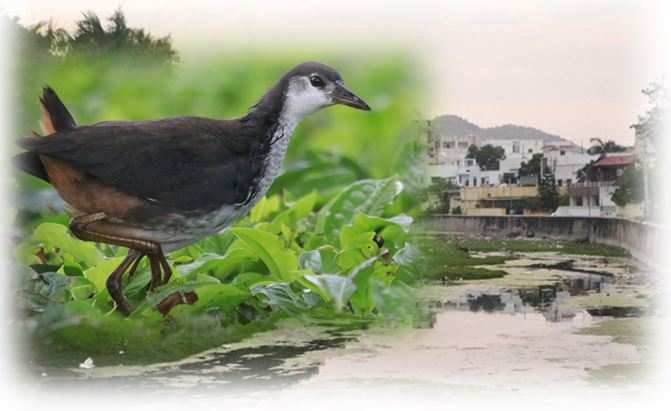My Encounter With A Survivor | Dr Raza H Tehsin
We built a house on the outskirts of Udaipur city in the late 1950s. The area is called Panchwati. Apart from two more houses, there was no other construction around at that time and the remaining land was covered with scrub jungle in the vicinity full of birds and other animals. Jackals, foxes and hyenas were not an uncommon sight. Occasionally leopards also visited the area.
Near our house there is a nullah through which the excess water of two lakes of Udaipur, Fatehsagar and Pichola, is discharged. At that time the nullah was not pucca (paved) and was perennial. There were numerous water pools, deep as well as shallow, full of aquatic vegetation. The pools harboured many types of fishes. The nullah abounded in various aquatic birds.
Trees along the banks of the nullah provided excellent nesting site for aquatic birds.
Gradually bricks piled up in the vicinity and the surroundings of the nullah converted into a colony. The denizens of the nullah also gradually faded away from the area. Government levelled the nullah, broadened it and erected a pucca wall on the embankment to safeguard the surrounding colony from flooding. Aquatic birds and waders like Cormorants, Darters, Painted Snipes, Pond Herons as well as fishes vanished. Now this piece of land, the nullah, is converted into an open sewerage.
One of the most striking features of this nullah, which attracted me, was its good population of Indian White-Breasted Waterhen (Amauronis phoenicurus). Often, I used to watch them in the reeds feeding cautiously, constantly jerking their tails and taking advantage of every bit of cover. In the rainy season during nights their raucous roars, croaks and chuckles and their krr-kwaak, krr-kwaak was a sweet melody and had a tranquillising effect on me.
As the reeds vanished, they took refuge in the bushes on the banks but gradually the bushes also vanished. Only a patch remained untouched because it is in our compound. Apart from bushes we planted some bamboos and four clumps are flourishing. But this was too small a habitat for all the birds. Only a pair of Waterhen took shelter in it. During the rainy season of 1985, this pair could be heard during the night from the bamboo clumps.
Early morning of 13 August 1985, I found 2 chicks of these birds at the base of the bamboo clump. I searched for the nest and found it inside the bamboo clump about 9ft from the ground. The hen was hiding in the bushes with the remaining brood and constantly calling the chicks. In all there were 8 chicks in the brood but not a single survived. Again, in the year 1986 the pair used the same nest and I first sighted a large brood of 11 chicks on 20 August. On the morning of 21 August all the 11 chicks were found dead. I failed to find out the cause.
In the year 1987, the pair used the same nest. The chicks were sighted on 3 September. There were only 6 chicks in the brood. On 8 September at about 8.30AM, the brood ventured just outside the bush cover. Suddenly, a crow pheasant appeared and caught one of the chicks. The others were inside the bushes. The hen escorted the chicks away from danger. This helpless chick was released by the crow pheasant but as soon as it reached the bushes it was again dragged out by it. It played with the chick for 5min and then flew away with the chick in its beak.
From this brood only one chick survived. Also, after a lapse of a month, both the parents were killed by a domestic cat within a span of four days. A dark cloud loomed over the future of this chick. But the brave chick managed to steer away from many odds surviving and attained maturity. Sentimentally I was so involved that to watch this chick became a part of my daily routine.
During the rainy season of 1989, this waterhen called ceaselessly to acquire a partner and propagate. Night after night and during cloudy weather in the daytime it screamed madly to attract a partner, and this went on for over a month.
The poor bird seemingly failed in its attempt to attract a mate and left this small sanctuary on 16 August 1989. Thereafter the waterhen has not been sighted in our area.
Published in Newsletter for Birdwatchers:
Tehsin, R. H. (2000): My Encounter with a Survivor. Newsletter for Birdwatchers. Vol. 40 (6): 76-77
Also Published in Times of India:
Delhi edition, 2nd December 1989To join us on Facebook Click Here and Subscribe to UdaipurTimes Broadcast channels on GoogleNews | Telegram | Signal



